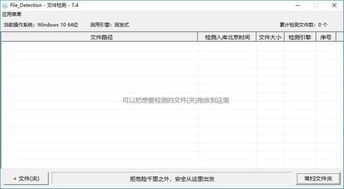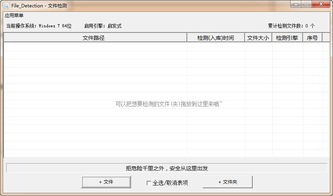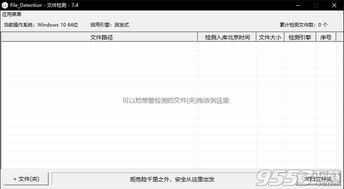
File Detection Modes: A Comprehensive Guide
Understanding how files are detected and classified is crucial in today’s digital landscape. Whether you’re a cybersecurity professional, a system administrator, or just someone looking to keep their digital life secure, knowing the various file detection modes can help you navigate the complexities of file handling and security. Let’s delve into the different detection modes and their implications.
1. Signature-Based Detection

Signature-based detection is one of the oldest and most widely used methods for identifying malicious files. It involves comparing the file’s signature, which is a unique pattern of bytes, against a database of known malicious signatures. If a match is found, the file is flagged as malicious.
| Advantages | Disadvantages |
|---|---|
| High accuracy in detecting known threats | Unable to detect new or modified malware |
| Fast scanning process | Depends on an up-to-date signature database |
2. Heuristic Detection

Heuristic detection is a more advanced method that analyzes the behavior of files rather than their signatures. It looks for suspicious patterns and actions that may indicate malicious intent. This method is effective against new and modified malware that doesn’t have a known signature.
Heuristic detection can be further categorized into two types:
- Static Analysis: This involves examining the file’s code and structure without executing it. It can identify suspicious code patterns and behaviors.
- Dynamic Analysis: This method involves executing the file in a controlled environment and monitoring its behavior. It can detect malware that tries to evade static analysis by modifying its behavior during execution.
3. Behavior-Based Detection

Behavior-based detection focuses on the actions performed by files rather than their code or signatures. This method is particularly effective against zero-day attacks and polymorphic malware, which can change their signatures but not their behavior.
Some common techniques used in behavior-based detection include:
- File System Monitoring: This involves tracking changes to the file system, such as the creation of new files, modification of existing files, and deletion of files.
- Network Traffic Analysis: This involves monitoring the network traffic generated by files to detect suspicious activities, such as communication with known malicious domains.
- Process Monitoring: This involves tracking the processes running on the system and their interactions with other processes and system resources.
4. Sandboxing
Sandboxing is a technique that involves running files in an isolated environment, such as a virtual machine or a container, to observe their behavior without affecting the host system. This method is particularly useful for detecting zero-day attacks and polymorphic malware.
Sandboxing can be further categorized into two types:
- Static Sandboxing: This involves analyzing the file’s code and structure without executing it. It can identify suspicious code patterns and behaviors.
- Dynamic Sandboxing: This involves executing the file in a controlled environment and monitoring its behavior. It can detect malware that tries to evade static analysis by modifying its behavior during execution.
5. Machine Learning and AI
Machine learning and artificial intelligence are increasingly being used in file detection to improve accuracy and efficiency. These technologies can analyze vast amounts of data to identify patterns and anomalies that may indicate malicious intent.
Some common applications of machine learning and AI in file detection include:
- Feature Extraction: This involves extracting relevant features from files, such as their code, structure, and behavior, to train machine learning models.
- Classification: This involves using machine learning models to classify files as malicious or benign based on their features.
- Anomaly Detection: This involves using machine learning models to detect anomalies in file behavior that may indicate malicious intent.
By combining these various file detection modes, organizations can create a more robust and effective security posture. Understanding the strengths and limitations of each mode can help you choose the right tools and strategies to protect your digital assets.




